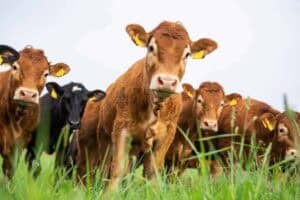Agriculture experts have called for pro-active, long-term solutions to the disease, instead of more short-term, knee-jerk reactions.

South Africa’s current 21-day ban on cattle movement, meant to curb the spread of Foot and Mouth Disease (FMD), has been slammed as a senseless and drastic move with the potential to ruin the entire red-meat value chain, and unavoidable ripple effects on meat prices.
Amid the criticism, there have also been growing calls for pro-active and long-term control measures of Foot and Mouth Disease, including vaccine manufacturing, a dedicated rapid response team, and rapid testing and diagnostics as seen with Covid management.
ALSO READ: Foot-and-mouth-disease-ban-could-be-disastrous
Which animals are at risk?
Head of department of Production Animal Studies at the University of Pretoria’s Faculty of Veterinary Science, Dr Rebone Moerane, explained that all cloven-hoofed animals like cattle, sheep, goats, pigs and game such as impala, are susceptible to the disease.
According to Statistics SA, there were 5.9 million head of cattle on South African farms in 2017, mostly concentrated in the provinces of Free State and Eastern Cape.
Setsoto, which includes the town of Ficksburg, was the municipality with the largest cattle population.

Most sheep on commercial farms were concentrated in a region covering parts of Northern Cape, Western Cape, Free State and Eastern Cape.
Gauteng, KwaZulu-Natal and Limpopo were home to half of SA’s commercially raised pigs in 2017, with a significant number – just over 185,000 – located in the Pretoria region, in the Tshwane metropolitan municipality.
Collective responsibility
According to Moerane, all cattle breeds can be infected, and Foot and Mouth Disease is one of the most contagious animal diseases, and despite having low mortality rates in adult animals, there is often increased mortality among young animals.
The animals generally recover within two to three weeks but Moerane said they could become carriers and, thus continue to pose a threat of spreading the infection in a herd.
Asked whether government’s response to the current outbreak could be deemed sufficient, he said firstly the control of any animal disease was not a sole responsibility of government.
ALSO READ: Cattle-movement-banned-to-stop-spread-of-foot-mouth-disease
All stakeholders must come on board to prevent further spread of the disease, including mapping out a clear way forward, Moerane said.
He said according to Section 11 of the Animal Diseases Act, any farm owner or manager must take all reasonable steps to prevent an outbreak of animal diseases on their land and from spreading from their land.
No Vaccine
Despite this need for collective responsibility, Moerane does believe government’s interventions are coming up short.
“The current measures are in my opinion short-term and not holistic, and it is a pity that we expect the current veterinary authority to control and prevent the spread of [Foot and Mouth Disease] with the limited resources at hand…
“If you decide on having movement restrictions, then you must have resources available to monitor and enforce, through roadblocks and permit movement system. Unless the security cluster is not on board to assist, and you have personnel on the ground to issue permits, we can then forget on appropriate implementation.”
He said the Animal Disease Act does empower the director to authorise people to assist with implementation, but then they must be given appropriate funding and a mandate.
The cattle in the infected areas, including the surveillance zones around the infected areas, must be vaccinated, Moerane said. Unfortunately, however, South Africa does not produce its own vaccines, and rely on importing vaccines from countries like Botswana.
“Even if we import the vaccine, we cannot acquire sufficient vaccines to deal with the current problem. We need our government to put forward required funding so that as a country, we can produce our own vaccine as in the past,” Moerane added.
Dean of Faculty of Veterinary Science Vinny Naidoo echoed Moerane’s sentiment, saying it was difficult to say if the restrictions would truly have the desired effect, but said that if cattle movement could be stopped, the spread could be halted.
He,, however, also stressed this is dependant on being able to vaccinate in the areas of the outbreak, as well as vaccine availability.
Long-term solutions
Naidoo said a big concern was that the original spread of the disease resulted from illegal movement of animals and was unsure if another set of rules on movement would be effective.
He would personally like to see the introduction of other control measures that would be more effective for long-term control, including a national institute for veterinary infectious disease, understanding the root cause of illegal cattle movement, and managing this in a different manner than just banning movement.
ALSO READ: Hand-foot-mouth-disease-vaccination-kzn
“Foot and mouth disease should perhaps be more collectively managed by the entire agricultural sector, since it impacts us all, and not let our farmers in the quarantine areas bear the brunt of controls around the disease. Start our own Foot and Mouth Disease vaccine manufacturing as soon as possible,” Naidoo said.
He said that farmers who have been cooperating in terms of vaccinating their animals against the disease need assistance from government in processing their animals, so that they could also generate income from their livestock.
Naidoo lamented that despite a decade of discussions, SA still did not have an appropriate traceability system which he said made tracing of animals very difficult and a number of communal farmers will be marginalised or excluded.






